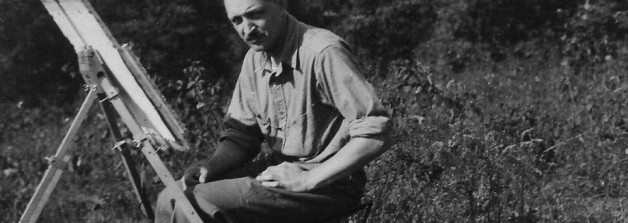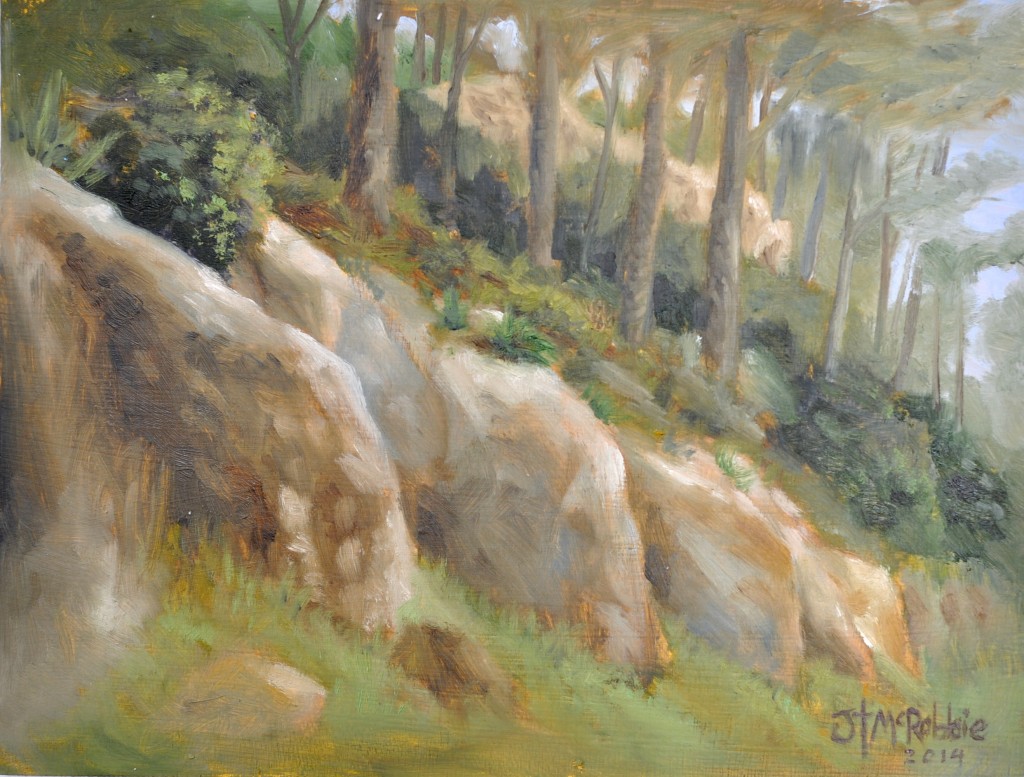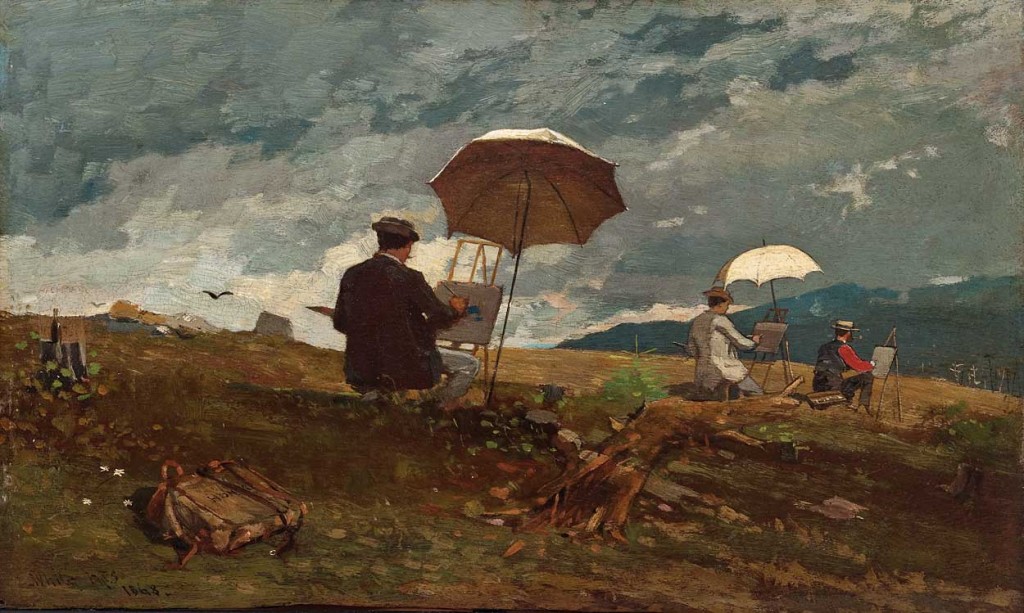For centuries, artists have sought the quiet and inspiring outdoors to set up an easel and paint or draw the scenes before them.
Painting “en plein air” is the popular french term, though it means merely painting outside or “in the open air” … and the Italian “al fresco” has a similar tone of “in the fresh air.” Popular now in the USA is the increasing call to “paint-outs” or outings focused on a particular location or subject area. It’s a matter of preference, I suppose … but the bottom line is it will change you.
It’s opener, out there, in the wide, open air. – Dr. Seuss

Claude Monet Painting by the Edge of a Wood, 1885 by John Singer Sargent
There are a number of points both very challenging and very rewarding in this pursuit. But most agree that there is great benefit to the urgency of capturing the vision of a transient moment in time … before it passes. Shifting clouds, changing light, moving people and animals, volumes that go from bold to flat with the passing of the day. One brings ones’ full attention to these details and textures with such an intense energy that it is like getting lost in the glory of a place, as in a vision, or a dream.
Whenever I’ve gone outdoors to paint there is this heightened perceptiveness afterwards. This being at one with everything – the air is fresher and the sky is glorious. It’s a thrill to be alive – and being a painter makes you the luckiest of men. – Irwin Greenberg
Some of the leading painters of the last century spent many hours painting out-of-doors, or en plein air. Van Gogh, Turner, Homer, Cassatt, Payne, Sorolla, Sargent, Tanner, the Wyeths and countless others knew the rewards and difficulties of working in the circumstances of hot sun, scratchy underbrush, deep snow, rain, mosquitoes, and fog. Theirs were the joys, though of seeing marvelous works emerge that captured the very visions of composition and color that moved them to go outside in search of beauty and story.

Beach at Valencia, 1908, by Joaquin Sorolla
I myself have only just begun to experience the thrill of painting en plein air after our 2014 Plein Air Morocco workshop with Sam Paonessa. It really is a challenge to capture the colors and forms before the light or weather totally changes the palette. At the same time there is a sense of time stopping and every living detail of a scene becoming important to the whole. Sam had me begin with a monochromatic and then move to a triad palette to focus more on volumes and light than color.
I’m learning to let go of my tight control of the brush and work more quickly … to make faster (even more accurate) marks that match my perception of things. The goal is not necessarily photo-realism or exact representation, but more about the artist’s vision of a place and composition. It’s definitely intimidating to this newbie, but I think I am hooked. Maybe you’d like to join us for Plein Air Morocco 2015 with master artist and teacher Sam Paonessa to sharpen your skills and heighten your perceptiveness. We’d love to have you join us for the adventure outside your comfort zone … if you dare.



